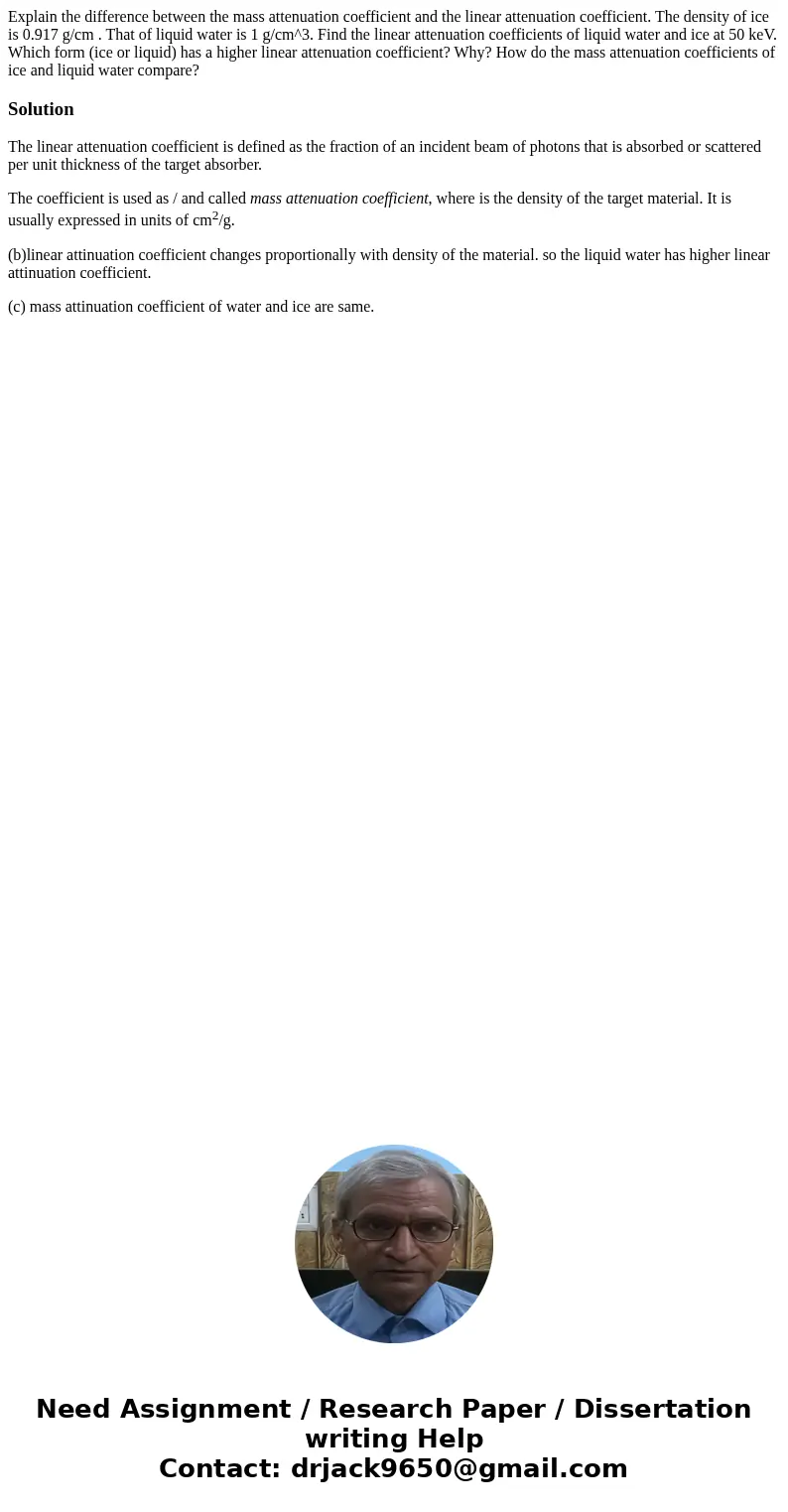Explain the difference between the mass attenuation coeffici
Explain the difference between the mass attenuation coefficient and the linear attenuation coefficient. The density of ice is 0.917 g/cm . That of liquid water is 1 g/cm^3. Find the linear attenuation coefficients of liquid water and ice at 50 keV. Which form (ice or liquid) has a higher linear attenuation coefficient? Why? How do the mass attenuation coefficients of ice and liquid water compare? 
Solution
The linear attenuation coefficient is defined as the fraction of an incident beam of photons that is absorbed or scattered per unit thickness of the target absorber.
The coefficient is used as / and called mass attenuation coefficient, where is the density of the target material. It is usually expressed in units of cm2/g.
(b)linear attinuation coefficient changes proportionally with density of the material. so the liquid water has higher linear attinuation coefficient.
(c) mass attinuation coefficient of water and ice are same.

 Homework Sourse
Homework Sourse